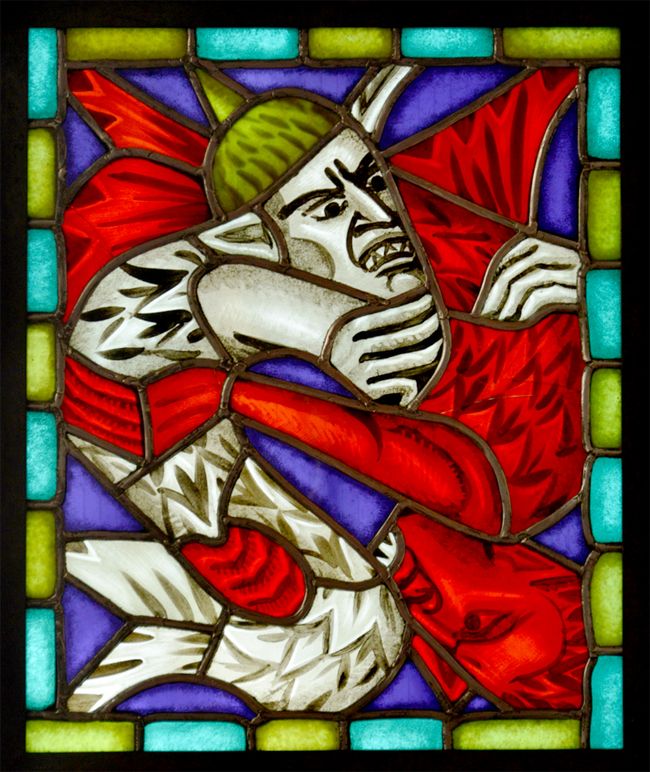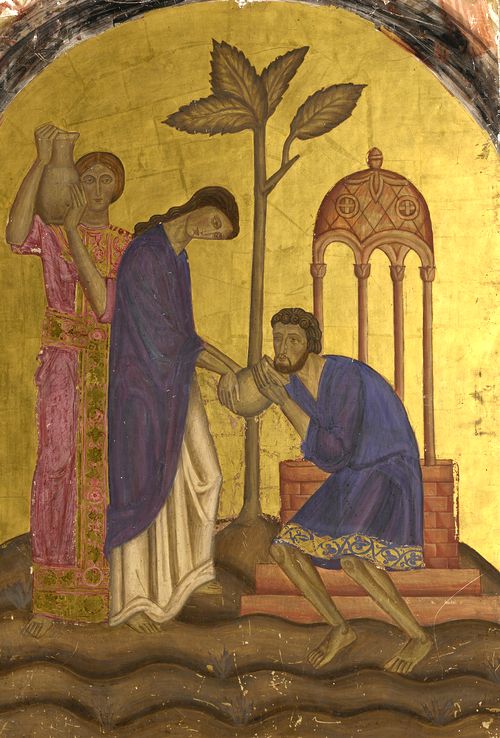Zofia (Sofia) Baudouin de Courtenay was born on January 2, 1887, in Dorpat (now Tartu, Estonia) to the family of Jan (Ivan) Baudouin de Courtenay, a well-known Slavicist, a professor at Krakow and Dorpat universities. In 1901 the “founder of the phoneme studies in linguistics” and his family moved to St. Petersburg, where he began to work at the local university. Sofia gained primary education at a St. Petersburg private school and attended Hanna Milkowska’s drawing and painting classes. At 18, she began to go to the Art Promotion Society’s school run by the popular impressionist artist Jan Ciaglinski. It was assumed that “working at his studio meant to be at the cutting edge of all the contemporary knowledge of art both abroad and here.” She met here two beginner artists who came from Polish aristocratic families – Zofia Nalepinska and Zofia Segno. The “young emancipated women” decided to do further studies at European art schools.
In 1906 Baudouin de Courtenay and her friends studied at Professor Sandor Hollosi’s studio in Munich and from 1908 onwards at the Academie Ranson in Paris. Here, at the studio of Paul Serusier, “the three Zofias” met Mykhailo Boichuk who, together with Lev Kramarenko and Andrii Taran, turned out to be living next door at a lodging-house at 9 Rue Campagne-Premiere, where three young ladies settled.
Together with J. Baczynski, J. Lewakowska, J. Pelenski, and G. Schramm, they formed a society of young artists who adored their new teacher. But Boichuk’s school in Paris happened to exist for a short time. As soon as 1910 Baudouin de Courtenay returned to St. Petersburg, where she and Yevhen Sahaidachny became active participants in Youth League and Knave of Diamonds exhibits. Her work, A Girl and a Ram (1910), has survived since then.
Still remaining in contact with the teacher, Baudouin de Courtenay, Nalepinska, and Sahaidachny came to Lviv, where they took part in restoring the iconostases and polychromy of the Holy Ghost Chapel. Then, with Mykola Kasperovych in addition, they went, at the invitation of the Russian Archeological Society, to restore a church iconostasis at the village of Lemeshi, Chernihiv gubernia. She spent the World War One years in St. Petersburg, undergoing treatment for tuberculosis at Finnish sanatoriums and getting ready for a solo exhibit that was held in Helsinki in March 1917.

In 1918, Sofia, her father and sister moved to Poland, where she began to actively deal with the mural polychromy of cult structures. In 1924, the Garlinski Salon in Warsaw staged a group exhibit about the construction of a Catholic cathedral in Starachowice, whose overall project was presented by the architect Jan Borowski and the project of interior decor by Baudouin de Courtenay and Schramm.
In 1929, Poznan hosted another group exhibit, “The Region and Poznan,” where Zofia, together with Lewakowska and Schramm, displayed tempera easel compositions. The works of that period – A Psaltery Player and Two Girls (1918), Near the Well, Fish Market (1920s), now kept at the National Museum in Warsaw, – feature Boichuk-style monumentalism coupled with modern-day expressive plastique and elements of the refined color range of Old Polish Gothicism.

In the course of years, cooperating with Borowski, the artist was busy restoring architectural monuments, painting frescoes and altar images, doing graffito and encaustics, designing stained-glass compositions, and drawing on glass. Baudouin de Courtenay restored or freshly decorated 24 structures – “from Jaroslaw to the Western lands.” Among them are frescoes, mosaics, and stained-glass windows at Catholic churches in Wierzbnik (1924), Bielawa (1930), Radziejow (1934), St. Gorge’s Church in Sopot, St. Elizabeth’s and St. James’ churches in Gdansk (1948) and Dobry (1954), as well as glass paintings at Oliva’s See (1947), St. Elizabeth’s and St. James’ churches in Gdansk (1948), St. Andrew’s See in Czestochowa (1957), at al.

Working mostly in Poland’s Western lands, Baudouin de Courtenay used Byzantine traditions coupled with the theoretical and artistic principles of Boichuk’s early school. In spite of a certain ideological and plastic difference from Polish art culture, her original monumental compositions are distinguished for a restrained form in conjunction with rich coloring which the artist applied in her artistic manner as a result of examining the ancient frescoes of Pompeii to which she devoted her art history publications. However, Polish art history literature and the press have almost entirely ignored the artist’s postwar oeuvre, leaving it on the fringes of official art.
Zofia Baudouin de Courtenay struggled with pulmonary tuberculosis from a young age and allowed death to take her away at 80 on March 28, 1967. She was buried at the family crypt in Warsaw’s Powazki.
Yaroslav Kravchenko is a Candidate of Sciences (Art History) Illustration courtesy of the author







